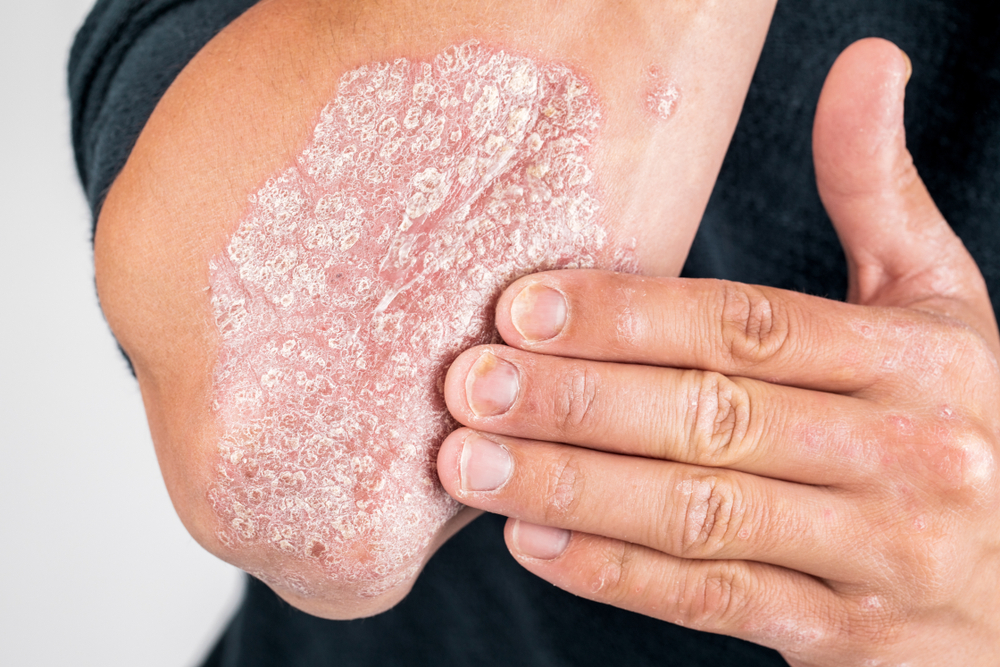
If a veteran is suffering from psoriasis due to exposure to Agent Orange or other chemicals during their military service, they may be eligible for VA disability ratings and benefits.
Establishing A Service Connection For Psoriasis?
Establishing a service connection for psoriasis involves presenting compelling evidence to demonstrate a direct link between the condition and your military service. To qualify for disability benefits related to psoriasis, veterans must establish the following:
Current Diagnosis of Psoriasis: Provide documentation confirming a current diagnosis of psoriasis from a qualified medical professional.
In-Service Event, Severe Injury, or Illness Related to Psoriasis: Present evidence indicating an event, severe injury, or illness during your military service directly connected to psoriasis.
Medical Correlation: Establish a clear medical correlation connecting the present and diagnosed psoriasis to the in-service event, severe injury, or illness.
Veterans are advised to be specific about the event or experience that led to the development of their condition. Including ample evidence that directly ties the military incident to the onset of the condition significantly enhances the likelihood of a successful claim.
VA Rating Criteria For Skin Conditions
The VA evaluates military-related skin conditions, referencing 38 CFR § 4.118, Diagnostic Codes 7800-7833. In the case of psoriasis, its rating is determined within the framework of the basic rating system or categorized under scars or disfigurement based on the severity of the condition.
Similar to other skin conditions, the VA rates psoriasis by considering the extent of skin involvement. This evaluation employs two distinct methods:
Skin Area Calculations
This method quantifies the damaged surface area in square inches. The assessment is based on precise measurements of the affected skin.
Skin Area Estimations
This approach evaluates the percentage of skin affected, providing a broader perspective on the overall impact of the condition.
For veterans with head, face, or neck scars, the rating is determined by the extent of skin injury and the number of facial features affected. This specialized consideration acknowledges the unique challenges posed by scars in these prominent areas.
VA Disability Ratings For Skin Conditions
The VA employs a comprehensive rating system, outlined in the General Rating Formula, to evaluate various skin conditions. The following percentages are assigned based on the severity and extent of the condition:
60% VA Rating: Clear cuts involve more than 40% of the body or more than 40% of the areas affected.
Consistent or near-consistent systemic treatment, such as corticosteroids, biologics, photochemotherapy, phototherapy, retinoids, psoralen with long-wave ultraviolet-A light, or other immunosuppressive drugs needed over the previous 12-month period.
30% VA Rating: Clear cuts involving 20 to 40% of the body or 20-40% of evident areas affected.
Systemic treatment, including corticosteroids, phototherapy, retinoids, biologics, PUVA, photochemotherapy, or other immunosuppressive drugs, is needed for six weeks or more, though not consistently, over the previous 12-month period.
10% VA Rating: Clear cuts involving at least 5%, but less than 20%, of the body affected.
At least 5%, but less than 20%, of evident areas affected.
Intermittent systemic treatment, such as retinoids, biologics, photochemotherapy, corticosteroids, phototherapy, PUVA, or other immunosuppressive drugs, is needed for fewer than six weeks over the previous 12-month period.
0% VA Rating: No more than topical applications are required over the previous 12-month period.
Clear cuts involving less than 5% of evident areas affected.
Rate as deformity of the head, neck, or face (DC 7800) or scars (DCs 7801, 7802, 7804, or 7805), depending upon the prevailing disability.
Systemic treatment encompasses any treatment administered through injection or oral, nasal, or anal routes, as specified within the ranking criteria. In contrast, topical treatment involves medications applied directly to the skin.
Rating 10% – at least one of the following: clear cuts involving at least 5%, but less than 20%, of the body affected. Or, at least 5% but less than 20% of evident areas affected. Or, intermittent systemic treatment includes but is not limited to, retinoids, biologics, photochemotherapy, corticosteroids, phototherapy, PUVA, or other immunosuppressive drugs needed for fewer than six weeks over the previous 12-month period.

